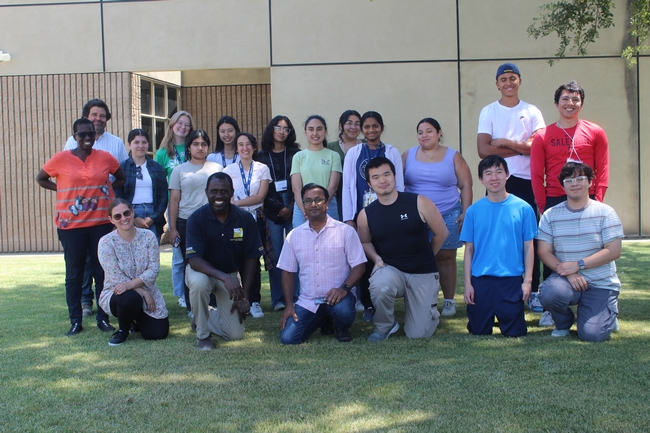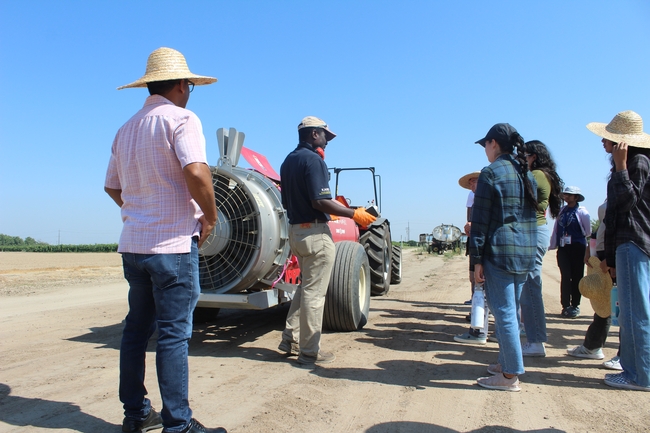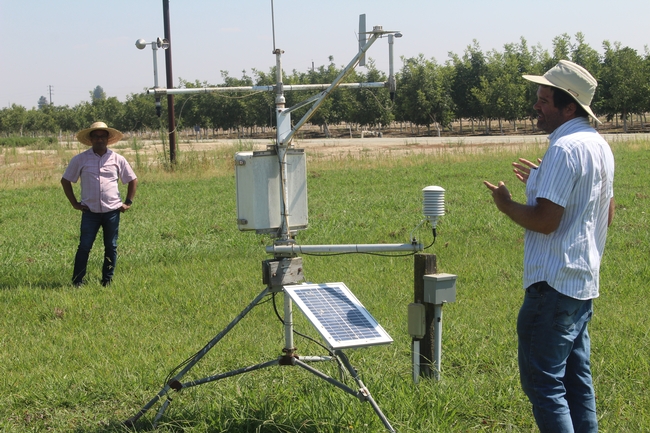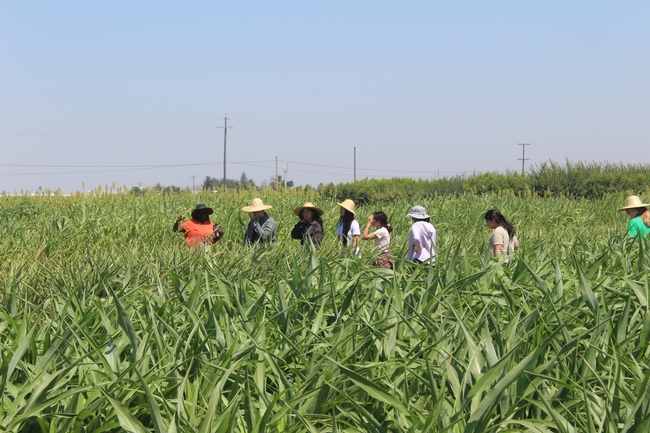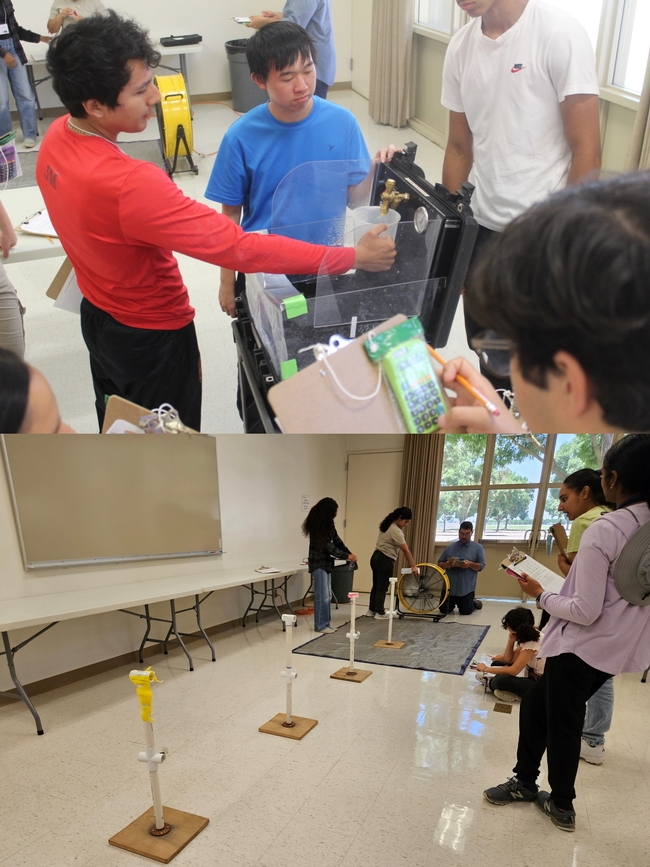Social media summary
Upon touring field research sites, listening to talks, and engaging in hands-on activities at the Kearney Agricultural Research and Extension Center, 100% of undergraduate students reported learning more about agricultural STEM research areas, which could steer them towards careers in agriculture.
The Issue
Students often lack awareness or appreciation of the existing relationships connecting agriculture and technology. For instance, students who are interested in emerging technologies may have never considered a career in agriculture. Conversely, students interested in agriculture may not have considered opportunities in research or practice involving technology. This tour sought to expose students to some examples of agricultural research involving technology to expand their knowledge of agriculture and the place of technology in agriculture-related research and practice.
How UC Delivers
In July 2023, UC ANR's Kearney Agricultural Research and Extension (KARE) Center hosted the 2023 cohort of students from the University of California Merced's San Joaquin Valley Food and Agriculture Cyberinformatics Tools and Science (FACTS) Bridge Program for a tour. The goal was to broaden the students' exposure to agricultural research and extension involving science, technology, engineering, and mathematics (STEM). The tour was also intended to provide the students with learning about technology and job opportunities in agriculture. The day was divided into two sections. In the morning, students went outside to visit field research sites and learned more about the specific projects underway. In the afternoon, students attended indoor presentations with hands-on activities. The 5.5-hour tour was presented collaboratively by UC Cooperative Extension Specialists Peter Ako Larbi, Jackie Atim and Bali Lab staff research associate, Brady Holder. Agricultural Application Engineering (AgAppE) Lab assistant Daniel Cabrera provided photography coverage for reporting. KARE Center staff also provided logistical and transportation support for the entire tour. The students were led by UC Cooperative Extension Specialist Safeeq Khan.
After being welcomed upon arriving at KARE, the students started the morning section. They were transported on a tram to the research fields, making stops at selected locations where they were hosted to presentations and demonstrations. The presentations/demos were given in an interactive format which allowed the students to engage with their observations, comments, and questions.
The first stop was by an almond orchard where Larbi provided an overview of pesticide spray application in orchards and vineyards, including the integration of emerging sensing and automation technologies for precision application. He also demonstrated airblast spray application in the almond orchard, placing water sensitive cards in a target tree canopy to demonstrate spray dispersion and coverage
The second stop was the California Irrigation Management Information System (CIMIS) weather station where Holder talked about how it is used to calculate crop water use. The presentation covered the various sensors employed and how they combine to measure evaporation rate as well as transpiration of the grass underneath the station.
The third stop was by Atim's sorghum plots where she talked about research into drought stress using sorghum, a drought tolerant and nitrogen efficient crop that is utilized as food, feed, forage, biofuel and bioproducts. Holder was able to demonstrate the use of drones in sorghum data collection.
The morning section ended with two additional stops hosted by Holder: one by a subsurface drip irrigation demonstration in tomatoes with a presentation covering how evapotranspiration values from CIMIS are used for proper irrigation scheduling to meet crop water needs and avoid waste; and another by alfalfa plots used to research deficit irrigation and groundwater recharge.
The afternoon section started with two spray hands-on activities intended for the students to become more familiar with the concepts of spray application. After a brief introduction by Larbi, the students were split up for two activities: 1) a nozzle flow rate measurement exercise; and 2) a spray dispersion demonstration exercise assisted by Cabrera. Atim and Holder further presented on research done at KARE center. The students completed evaluation forms at the end of the section/tour.
The Impact
A major goal of this tour was to increase knowledge of agriculture and use of technology in agriculture in California. A summary of the evaluations provided by student respondents are shown in the graphic below. On average, 88±10% reported gaining “much” or “very much” learning from the individual presentations on the tour. Lumped into the two sections, 86% and 90% gained such learning in the morning and afternoon sections, respectively. Overall, 100% of respondents reported such learning gains during the tour. During the tour, students learned about challenges and opportunities in California agriculture, which could potentially become a stepping-stone into career opportunities or research areas they might undertake themselves in their future.
Studies have shown bridge programs like this one increase first year overall grade-point average and university retention. Exposing students to research activities is particularly beneficial for encouraging students to enter and persist in STEM majors. Introducing incoming first-year students to ongoing agricultural research improves their awareness of agricultural STEM research and practice opportunities, a key step in not only increasing interest in and commitment to pursuing agricultural STEM majors but also careers in food and agriculture.
The FACTS summer bridge program will continue next year, when a new cohort of incoming first-year, second-year, transfer students, as well as returning second-year students visit the KARE Center to learn about agriculture, ag research, and technology.
